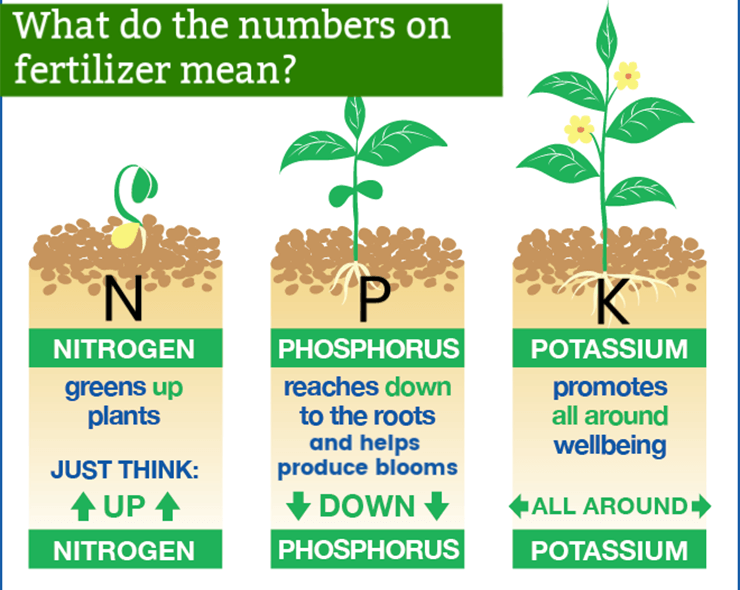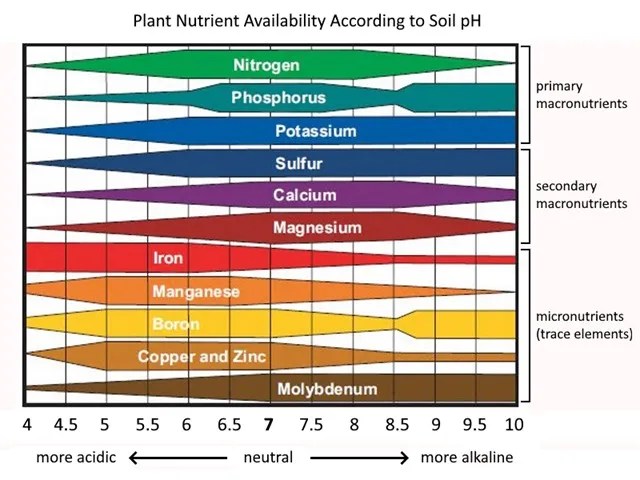Smart Fertilizing: When and How to Fertilize Your Plants
Tired of guessing games with your plant food? Unlock the secrets to vibrant, thriving greenery with our guide to smart fertilizing! Discover the when, why, and how behind nourishing your plants for optimal growth.
GUIDESFERTILIZERS
Jonathan Burton
4/4/20257 min read


Fertilizing your garden isn’t just about tossing nutrients around and hoping for the best. It’s an art—knowing the perfect timing, using the right techniques, and giving your plants exactly what they need to thrive. Whether you're growing lush vegetables, fruit-laden trees, vibrant flowers, or resilient native plants, understanding when, how, and why to fertilize will transform your garden into a flourishing paradise.
Understanding What Your Plants Are Actually Eating
Fertilizer labels usually show three numbers, like ten-ten-ten or five-three-three. These represent the percentage of three key nutrients: nitrogen (N), phosphorus (P), and potassium (K).
Nitrogen (N) promotes leafy growth. It’s essential for healthy stems and foliage—think lettuce, kale, or young seedlings.
Phosphorus (P) supports strong root development and is key for flowers and fruits. If you want big blooms or a good tomato harvest, phosphorus is your friend.
Potassium (K) helps with overall plant health and resilience. It supports disease resistance, water regulation, and sturdy growth.
These three macronutrients are the foundation of most fertilizers, but don't forget about micronutrients—the lesser-known heroes that are crucial in smaller amounts.
Micronutrients: Small But Mighty
Micronutrients like iron, manganese, zinc, copper, boron, and calcium are just as essential as macronutrients, even though plants need them in much smaller quantities. They play a vital role in everything from enzyme production to photosynthesis, and they significantly influence plant health and development. In edible crops, micronutrients are especially important for flavor development, enhancing both the complexity and depth of your harvest. For example, plants that are deficient in manganese or zinc may have weaker flavor profiles, affecting the overall taste of fruits and vegetables.
Calcium: Strengthening Cell Walls and Plant Health
Calcium is another crucial micronutrient that plays a major role in strengthening plant cell walls and ensuring robust, healthy plant development. It contributes to structural integrity, making plants more resilient to stress, pests, and diseases. In addition, calcium supports the transport of other nutrients within the plant and helps regulate enzyme activity. A deficiency in calcium can lead to issues like blossom end rot in tomatoes, peppers, and other fruiting plants, or cause distorted growth in young shoots.
Iron: The Green Behind the Green
Iron is one of the most critical micronutrients, especially for tropical plants and citrus. It’s essential for chlorophyll production, which gives leaves their green color and enables photosynthesis. Without enough iron, young leaves may start to yellow between the veins—this is known as chlorosis. Citrus trees and tropical plants are particularly susceptible to iron deficiencies in soils with high pH or low organic matter.
Adding chelated iron or iron-rich organic fertilizers can help restore the balance and prevent yellowing. But more than just a cosmetic issue, iron is vital for the plant's ability to produce energy, which ultimately supports healthy growth and strong flavor development.
Step 1: Start with a Soil Test—Knowledge Is Power
Before reaching for that fertilizer, take a step back. A simple soil test is your first move. This little test reveals your soil’s pH and tells you about essential nutrients like nitrogen (N), phosphorus (P), and potassium (K)—no guessing required! By understanding your soil’s current health, you’ll know exactly what it needs, saving you time, money, and preventing unnecessary over-fertilization.
Why is pH so important? Well, your plants can’t access nutrients if the pH is off. Even if your soil is rich in minerals, a high or low pH could lock those nutrients away. Aim for a slightly acidic to neutral pH (around 6.0–7.0) for optimal plant health. If needed, adjusting the pH could be the first step to a thriving garden.
Not Every Plant Needs Fertilizer
Here's a little secret: Not every plant needs a nutrient boost. Many natives and climate-adapted plants thrive in even average soil. Over-fertilizing can backfire, leading to weak growth, pest problems, and disease vulnerability. So instead of fertilizing on autopilot, get to know each plant’s natural needs. Sometimes, all they need is good soil and proper watering to thrive.
Fertilizing New Plantings: A Gentle Start
New plants, especially annuals, need a little help getting established. Here’s how to set them up for success:
Wait for established growth: For seedlings, apply a light fertilizer once the second set of true leaves appears. For transplants, give them a couple of weeks to settle in before feeding.
Use a mild fertilizer: Choose a formula with higher nitrogen (N), like 5-3-3 or 10-5-5, to encourage green growth and root development.
Rich compost? If you're planting in nutrient-rich compost, you might not need fertilizer in the first season.
But be cautious—too much fertilizer too soon can harm tender roots and cause leggy growth. Young plants are sensitive, so ease off on the nutrients at first.
As Plants Grow, Their Needs Change
As your plants mature, their nutrient requirements evolve:
Young Plants: They thrive on nitrogen, which promotes leafy growth and healthy roots. Light, frequent feedings will keep them strong.
Established Plants: At this stage, growth slows. Shift your focus to phosphorus and potassium to support flowering, fruiting, and overall health. Too much nitrogen can lead to weak, pest-prone growth, so be mindful.
Once your plant reaches its desired size, reduce nitrogen and increase phosphorus and potassium to encourage strong flowers or fruit production.
Compost and Castings: The Dynamic Duo
Want to supercharge your soil? Compost and earthworm castings are your best friends. These provide slow-release nutrients and boost microbial activity, improving soil structure and nutrient availability.
The only negative is they can be quite costly, they should be used as a probiotic injecting life into your soil. Constantly applying is a waste because your soil can only support a certain population of life. As mentioned it is alive so remember to rake them into the soil. Exposing them to sunlight or wind can kill off the beneficial organisms that make them so effective. Keep them covered, and let them work their magic.
Rake Fertilizers In for Maximum Benefit
After applying any fertilizer, gently rake it into the soil. This helps nutrients reach the root zone and prevents them from washing away. It’s the same for compost and castings—integrating them helps preserve the microbes that are key to breaking down organic matter and promoting plant health.
Watering Matters: Fertilizers Are Salts
All fertilizers—whether organic or synthetic—are salts. And salts need water to be effective. Without enough moisture, they can build up and harm your plants’ roots. Always water deeply before and after fertilizing to ensure nutrients reach the root zone without causing damage.
Pro Tip: Water before fertilizing, not after. Dry roots combined with concentrated nutrients can cause fertilizer burn.
Deep Watering = Stronger Roots
While we’re on the topic of watering—deep, infrequent watering is better than frequent, shallow watering. It encourages roots to grow deep into the soil, making your plants more drought-resistant and healthier. Shallow watering keeps roots near the surface, leaving them vulnerable.
Organic vs. Synthetic Fertilizers: Which One Is Right for You?
Choosing between organic and synthetic fertilizers can be a game-changer for your garden:
Synthetic Fertilizers: These are quick-acting, water-soluble, and feed plants directly. They work fast but can disrupt the soil’s microbial balance if overused.
Organic Fertilizers: Derived from natural sources like kelp, composted manure, or fish emulsion, organic fertilizers feed both plants and the soil. They release nutrients slowly, promoting long-term soil health and sustainability.
Pro Tip: Pair organic fertilizers with compost or castings to help microbes break down the nutrients and make them accessible to your plants.
Water-Soluble vs. Granular Fertilizers: Choose What Works for You
When it comes to choosing fertilizers, there’s no one-size-fits-all. Consider these options:
Water-Soluble Fertilizers: They give quick results—perfect for a fast nutrient boost. However, they need to be applied regularly, so they require a little more work. These are great for container gardens or when specific nutrient deficiencies need fixing.
Granular Fertilizers: Slow-release and easy to apply, granular fertilizers are great for gardeners who want a more hands-off approach. They’re perfect for feeding garden beds every 6–8 weeks.
Most fertilizers last about 8 weeks, but always check the label for specific recommendations.
Productive Garden Beds Need Frequent Fertilizing
If you're growing high-yield vegetables or flowering plants, expect to fertilize every 4–8 weeks. These plants use up nutrients quickly, so regular feedings are necessary to keep them healthy and productive.
Keep an eye on your plants—yellowing leaves, stunted growth, or lack of flowers are signs they might need a nutrient boost.
The Dangers of Over-Fertilizing
More fertilizer doesn’t always mean better results. Over-fertilizing can lead to a variety of problems, including:
Soft, lush growth that attracts pests like aphids
Weak plant tissue, making them more susceptible to diseases
Soil imbalances that prevent plants from absorbing nutrients
Harmful runoff that can damage the environment
Resist the temptation to overfeed your plants. More fertilizer isn’t always the answer—balance is key.
Fertilizing at the Right Time: Timing Is Everything
Spring: This is when most plants wake up and need a nutrient boost.
Early Summer: Heavy-feeding crops like tomatoes and fast-blooming flowers thrive with a midseason feed.
Late Summer to Early Fall: Fertilize cautiously, using balanced formulas to avoid encouraging soft growth before the cold sets in.
When Not to Fertilize
Some times are just not ideal for fertilizing:
Winter dormancy: Plants aren’t actively growing, and cold soil won’t absorb nutrients effectively.
Extreme heat: Avoid fertilizing during heatwaves when plants are stressed and conserving moisture.
Before heavy rains: Nutrients can wash away before your plants can absorb them.
Winter: A Rest for Your Garden
Think of winter as a time for you and your plants to recharge. Cold soil doesn’t absorb nutrients well, and fertilizing during this time can lead to frost damage. Let your garden rest, and come spring, it’ll be ready to thrive.
Quick Reference: Fertilizer Needs by Plant Type
[Table or list of fertilizer requirements for specific plant types can be added here.]
Conclusion: Fertilize with Purpose, Not Habit
Fertilizing your plants isn’t a mindless task—it’s a strategy for success. By starting with healthy soil, paying attention to your plants, and applying the right nutrients at the right time, you’ll foster a thriving garden. Remember, smart fertilizing is about knowing when and how to support your plants—building a garden that thrives naturally and with less effort. Happy gardening!




